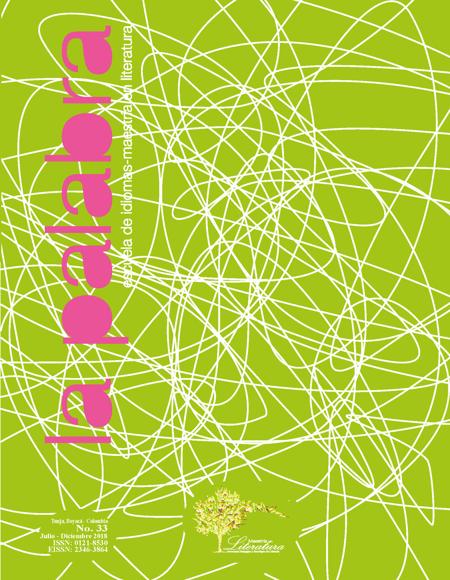The double is one of the predominant structures in fantastic orientation narratives. Not only is it related to theories of the fantastic in its conceptual articulation; it also inherits the same problems of context and dissemination of categories. This ar

Abstract
The double is one of the predominant structures in fantastic orientation narratives. Not only is it related to theories of the fantastic in its conceptual articulation; it also inherits the same problems of context and dissemination of categories. This article approaches the double as part of a study on fantastic literature in the context of postmodern narratives. For this, the following axes will be considered: multiple concep- tions of the fantastic given since the mid-twentieth century; the transition from modern to postmodern representation; the coincidence between postmodern narrative and representation of the double; the convergence of duplicities; the social double; the double and gender relations, the inefficiency of binary representation, and the deformation of literary doubles in parody and ontological instabilityKeywords
duplicity, multiplicity, disintegration of the being, extreme dialogism, fragmentation
References
Ballesteros González, A. (1998). Narciso y el doble en la literatura fantástica victoriana. Cuenca: Uni-versidad de Castilla La Mancha.
Bargalló, J. (1994). Identidad y alteridad: aproximaciones al tema del doble. Sevilla: Ediciones Alfar
Bessiere, I. (1974). Le récit fantastique. La poétique de l’incertain. París: Larousse Université.
Burgos López, C. R. (2017). Melodramas con brujas, vampiros u hombres lobos: El caso Pie de bru-ja de Carolina Andújar. La Palabra, (31), 211-225. Doi: https://doi.org/10.19053/01218530.n31.2017.7268
Caillois, R. (1958). Del cuento de hadas a la ciencia ficción. En Imágenes (pp. 9-47). Barcelona: Edhasa
Coates, P. (1988). The Double and the Other: Identity as Ideology in Post-Romantic Fiction. London: Macmillan
Conde de Boeck, J.A. (2016). Los Sorias y la escritura como guerra: temporalidad y mundos po-sibles en la poética de Alberto Laiseca. La Palabra, (28), 105-126. Doi: https://doi.org/10.19053/01218530.4791
Diaconu, D. (2017). La autoficción: simulacro de teoría o desfiguraciones de un género. La Palabra, (30), 35-52. Doi: https://doi.org/10.19053/01218530.n30.2017.6964
Doležel, L. (1995). “A semanthic for thematic: the case of the double” En: Thematics: New Approaches. Albany, State University of New York Press.
Escobar Vera, H. (2017). Guiño, ambigüedad e incertidumbre: claves de lectura y efectos estéticos del pacto ambiguo. La Palabra, (30), 69-91. Doi: https://doi.org/10.19053/01218530.n30.2017.6210
Espinosa, G. (2007). Cuentos completos. Bogotá: Alfaguara.
Gilbert, S. M. y Gubar, S. (1998). La loca del desván: la escritora y la imaginación literaria del siglo XIX (C. Martínez Gimeno, Trad.). Madrid: Cátedra, Universitat de Valéncia, Instituto de la Mu-jer
Gómez Valderrama, P. (1984). La nave de los locos. Madrid: Alianza Editorial.
González Salvador, A. (1980). Continuidad de lo fantástico. Por una teoría de la literatura insólita. Barcelona: El Punto de Vista
Hellens F. (1967). Lo fantástico real. Bruselas: Sodi
Hernández O., B. (2015). Poéticas de la reescritura: Héctor Viel Temperley y Leonidas Lamborghini. La Palabra, (27), 127-146. Doi: https://doi.org/10.19053/01218530.4000
Hutcheon, L. (1988). Poetics of Postmodernism: History, Theory, Fiction. New York: Routledge
Hutcheon, L. (1993). La política de la parodia posmoderna. Revista Criterios: edición especial de ho-menaje a Bajtín, 187-203
Jánicas, S. (2009a). Sacrilegio. Bogotá: Diente de León.
Jánicas, S. (2009b). “Conversación en la Ópera con Simón Jánicas” y “Perfil”. Recuperado de: http://simonjanicas-sacrilegio.blogspot.com/
Lodge, D. (1977). Modernists, Antimodernists and Postmodernists. En: The Modes of Modern Writing. London: Routledge
Martín López, R. (2006). Las manifestaciones del doble en la narrativa breve española contemporánea.(Tesis doctoral). Universidad Autónoma de Barcelona, Barcelona, España.
Miller, K. (1987). Doubles: studies in literary history. New York: Oxford University Press
Rank, O. (1971). The Double. A psychoanalytic study. Chapel Hill: University of North Carolina Press
.Roas, D. (ed.) (2001). Teorías de lo fantástico. Madrid: Arco/Libros.
Sánchez A., N. (2016). Desdoblamiento como eje composicional en los cuentos de Germán Espinosa. Revista La Palabra, (29), 103-115. Doi: https://doi.org/10.19053/01218530.n29.2016.5704
Slethaug, G. E. (1993). The Play of the Double in Postmodern American Fiction. Illinois: Southern Illinois University Press.Rosset, C. (1993). Lo real y su doble: Ensayo sobre la ilusión. Barcelona: Tusquets Editores.
Woolf, V. (1942). Professions for Women. En: The Death of the Moth and Other Essays. New York: Harcourt, Brace and Company.